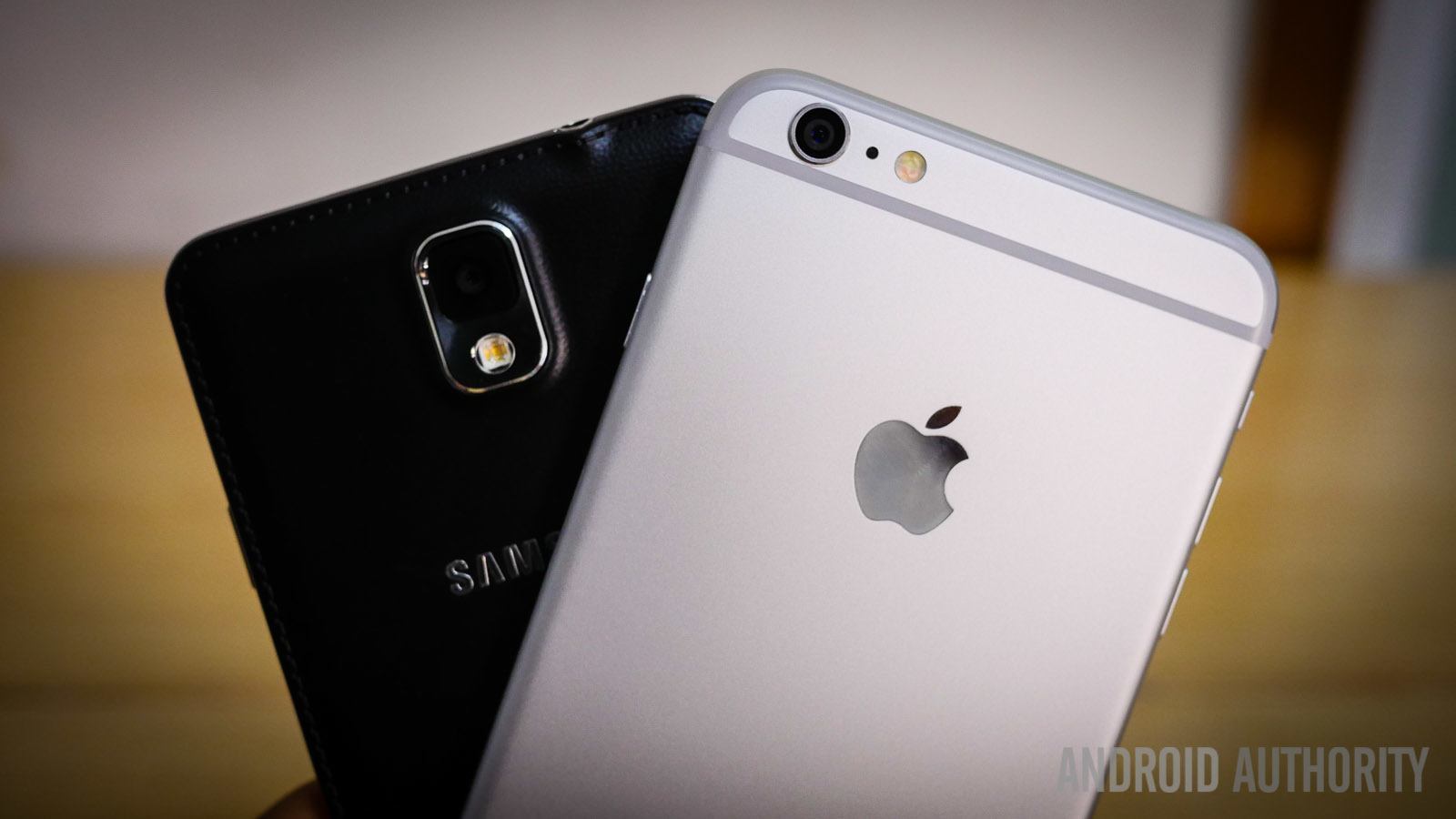Affiliate links on Android Authority may earn us a commission. Learn more.
Q4 2014 was a photo finish between Apple and Samsung

Research firms have been busy collecting data regarding smartphone shipments throughout 2014 and are finally ready to publish their findings. Although figures for Samsung vary by a tiny margin of error from firm to firm, the consensus is clear: 2014 was a tough year for Samsung, while Apple saw a surge in Q4 smartphone shipments.
Beginning with Apple, the company saw iPhone shipments soar to 74.5 million units in Q4 2014, a growth rate of 46.1 percent compared with Q4 2013, and saw a 25.6 percent increase throughout the year. The arrival of the iPhone 6 Plus as a competitor to larger Android phones is speculated as one possible reason for this uncharacteristic surge. It will be interesting to see is whether Apple can actually sustain this momentum this time around, or whether shipments will fall back towards Apple’s usual cycle.
Samsung, on the other hand, has been a little vaguer about its figures. The company stated that it has shipped around 95 million handsets in total last quarter and that smartphone sales accounted for a “high 70 percent” of that amount. Counterpoint Research has estimated Samsung’s smartphones shipments at 73.8 million, a smidgen behind Apple, while Strategy Analytics places the two companies neck and neck at 74.5 million each. Either way, there’s only a 1 percent margin of error between the figures, and both suggest that Samsung saw a slump in shipments last year.
On the positive side, the decline in Samsung’s smartphone shipments appears to be slowing. Volumes were down 14.9 percent between Q4 ’13 and Q4 ’14, but only 0.5 percent lower when comparing yearly totals.It is probably worth mentioning that shipments aren’t quite the same thing as actual sales, especially given the usual surge in stock levels around the holiday season.
Other Android manufacturers fared much better in the fourth quarter, with both Counterpoint Research and Strategy Analytics awarding third place to Lenovo and Motorola, following the finalization of the merger. The new company secured 25.9 million shipments in Q4 2014, a gain of 43.9 percent year on year and 54.3 throughout 2014 over Lenovo alone. HUAWEI came in fourth with a similarly impressive 24.2 million smartphones shipped last quarter and a 47.6 percent growth rate throughout the year.Xiaomi turns out to be the real success story last year though, despite landing in fifth place with 17.1 million Q4 shipments. Xiaomi’s shipments grew by an astonishing 167.2 percent over Q4 2013 and surged by a huge 227.3 percent throughout 2014, according to Counterpoint Research.
In terms of an overall market share, Samsung remains firmly out in front with 24.4 percent, followed by Apple on 14.8 percent, Lenovo and Motorola on 7.2 percent, HUAWEI with 5.8 percent and Xiaomi grabbing 4.7 percent of the global market.
Without a closer look at the regional figures, its difficult to say exactly what has contributed to Samsung’s slowdown and Apple’s surge. New product competition in the West and a growing Chinese presence in emerging markets are both likely to have contributed to varying extents. We’ll have to see if this is just a one off quarter or the start of a new trend.
2015 is going to be an important year for Samsung, the company clearly needs a new approach to mobile. This year will also no doubt present plenty of new opportunities for the fastest growing brands to further close the gap on the big two.